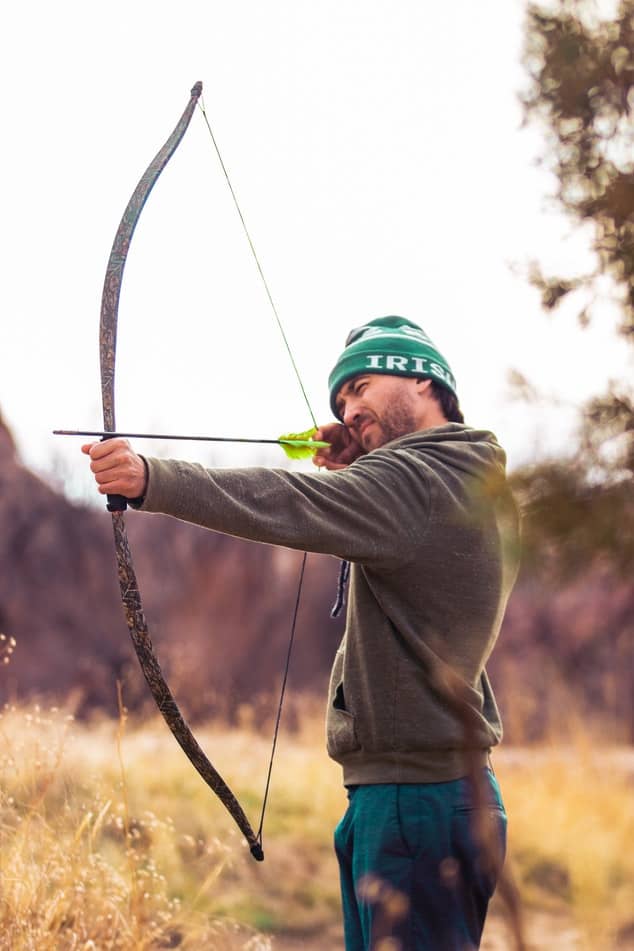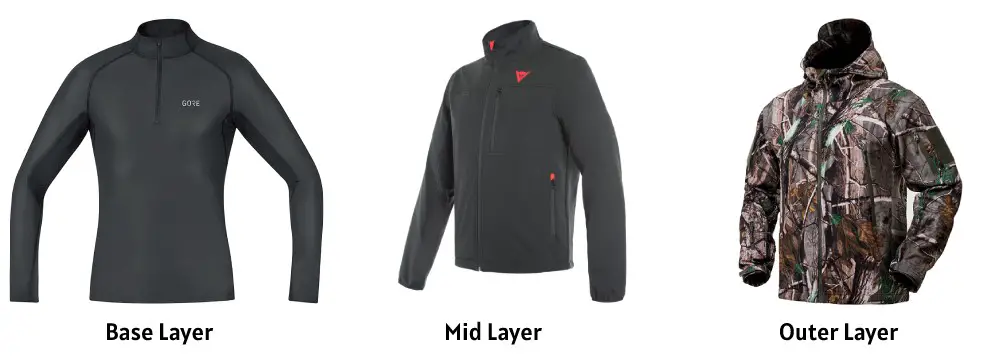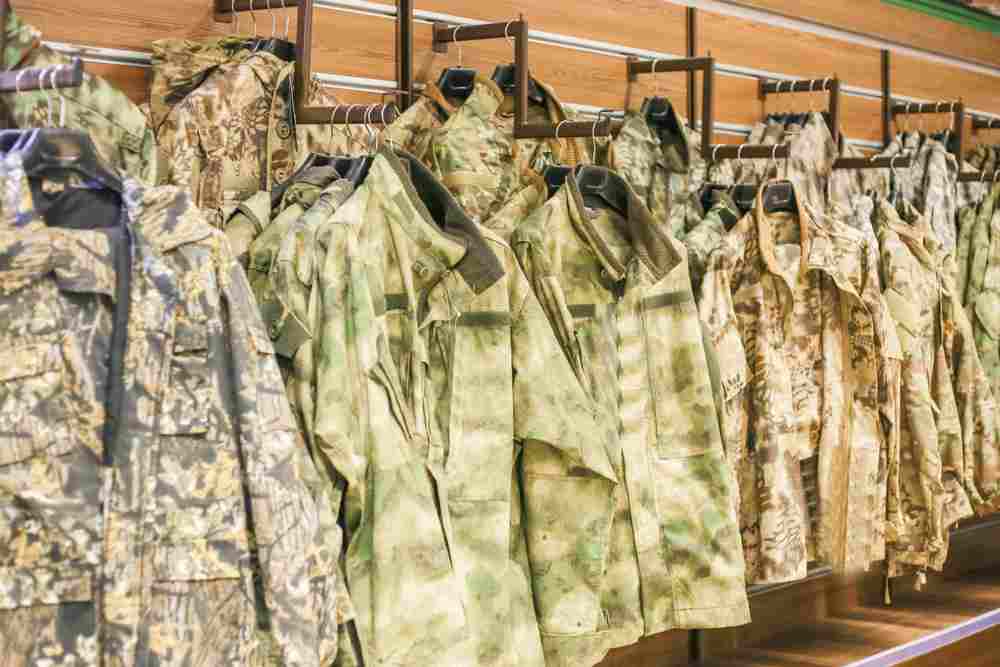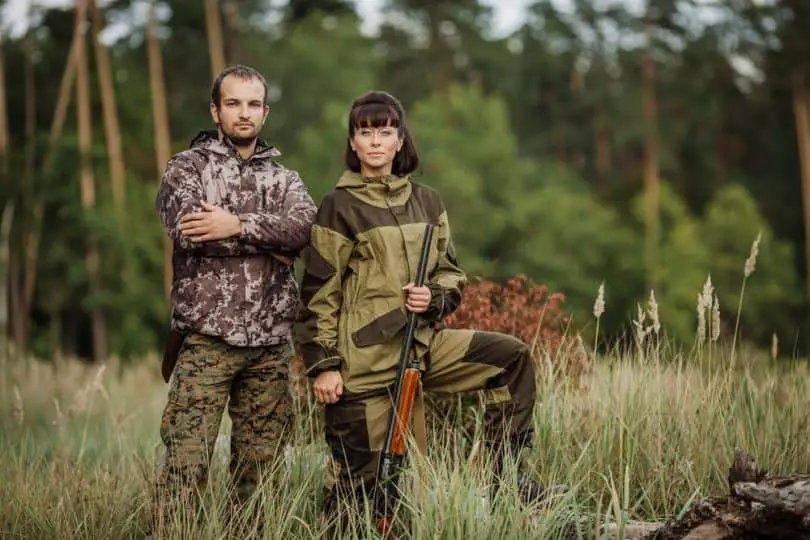Preparing yourself for the hunting season, eh?
The first and foremost duty is to learn how to dress for hunting the right way. Wearing the right outfit is essential for every hunting season.
Depending on the place and season of the year, you have to choose the most appropriate camouflage pattern and material.
In these cases, functionality isn’t everything because your personal comfort matters as well.
If you’re planning to spend several days outdoors, you’ll be exposed to external agents for a long time. So, your hunting outfit should guarantee protection above all.
On the other hand, if your type of hunting demands excessive physical effort, you’ll need something lighter and cooler. If you aren’t an expert on hunting clothes and need help choosing the right ones for you, don’t worry.
Today, we’ll explain all the aspects that you need to consider when looking for hunting gear and apparel.
How To Dress for Hunting – Pro Hunter’s Guide

The main goal of hunting is to catch your prey off-guard. Your clothing plays an important role here. You may be surprised to hear this, but the scent of your clothing alone is enough to scare your trophy buck away, and I’m sure you don’t want that.
So, here’s how to dress for hunting in a nutshell:
Choose your hunting clothes depending on the weather outside, the time of the day, the season, and your hunting type. Pick clothes that are good at covering scent, give you adequate protection from the weather and other nuisance (like insects), and fit your hunting style. Your comfort should also get a priority.
Let’s explore more in the sections below.
Seasonal Hunting
Summer Ending
In many places, the duck and deer hunting season begins in late August. So, it’s important to know how to dress for deer hunting/duck hunting properly. During this time, it’s wise to choose green tones that blend well with the hunting area.
Fall
During fall, neutral color tones will help you go unnoticed. Make sure to choose an appropriate color according to the scenario. Doing this will help you become almost invisible to your prey.
Winter
Last but not least, let’s explore how to dress for cold weather hunting. During winter, most hunting areas are covered in snow. In this case, it’s better to choose white and light gray clothes to camouflage yourself with the environment.
Spot-and-Stalk Hunting
Spot-and-stalk is a hunting modality that combines a lot of physical activity with long periods of inactivity.
In this case, the clothes should be cool and light during the day, to dissipate the heat and facilitate mobility. During nights and periods of inactivity, it’s better to opt for something warm, with extra insulation.
Cold-weather hiking clothes are a good choice for spot-and-stalk hunting. They help keep your body temperature stable and their fibers are resistant to tears and abrasion.
So, you can use them on rocky and sandy terrain with no problems.
Treestand Hunting
Certainly, treestand hunting is all about patience. For instance, it takes a lot of effort to hang your treestand before you can start hunting. This is how to dress for hunting when you’re in a treestand.
In this case, the hunter should camouflage himself between trees and bushes, waiting for his prey to arrive. This demands long periods of inactivity, where the hunter should remain immobile almost all the time.
Hunters usually lean against trees when doing treestand hunting. For this reason, the backside of the hunting jacket should be strong and soft at the same time.
Some extra layers of insulation are perfect for this purpose. The pants should also be comfortable and provide the necessary protection against the intense night cold.
It’s also convenient to take a waterproof hooded suit to stay protected from the rain.
Waterfowl Hunting
Waterfowl hunting involves being exposed to high humidity levels and very low temperatures for a long time. For this reason, it’s essential that your hunting outfit is as warm and waterproof as possible.
In addition, it’s convenient to cover your entire body with windproof protection.
In contact with water, the night breeze becomes even colder. So, without proper protection, there’s a high risk of hypothermia.
3 Types of Hunting Layers

-
Base/Inner Layer
The base layer is in direct contact with your skin. Its main function is to absorb sweat and evaporate it quickly. Synthetic fibers like polyester and polypropylene are excellent for this purpose.
However, some natural fibers like merino wool and silk are also effective and provide extra comfort. They’re also considerably more expensive.
-
Mid Layer
This is the second protection layer that covers the base layers.
Its main function is to retain heat and evaporate sweat. This layer should be flexible and resistant, so as not to break while you’re moving.
In extremely cold places, it’s convenient to use various mid-layers and thermal layers.
On the other hand, in warmer climates, a second mid-layer could also work as an outer layer. The material should be thin and light to better dissipate heat and facilitate mobility.
The most popular materials for mid-layers are nylon and merino wool.
-
Outer Layer
The outer layer is like the shield of your body. It’s directly exposed to external agents, so it should be highly resistant to humidity, UV rays, and temperature changes.
The outer layer also protects the mid-layer and the base layer. To do this, the fibers should repel water, wind, and small particles.
Also, the outer layer should be lightweight and easy to pack. That way, you can easily store it in your backpack when you don’t need it.
Hunting Apparel – A Quick Buying Guide

Always consider the hunting conditions before choosing your clothing layers.
For example, in places with cold weather, it’s important to stay warm. So, your clothes should be thick and well-insulated to prevent the passage of cold air.
On the other hand, your clothes should be light and fresh in very hot environments.
Considering the type of hunting is also important. For example, if you need to move quickly to reach your prey, too much clothing won’t help you at all. Carrying too much weight will make you slower and less effective on the field.
When choosing the camouflage pattern, keep in mind the current aspect of the environment.
Usually the colors and patterns of nature change between seasons. Using the wrong pattern will leave you exposed to the sight of your prey.
Whatever the case, never choose cotton for hunting. This material absorbs sweat, retaining moisture and causing bad odors.
At night, that extra moisture won’t help keep you warm.
The fibers of your clothing should be resistant to tears, abrasion, fire and water. For these purposes, synthetic materials are much better.
Conclusion
As you can see, choosing how to dress for hunting isn’t easy. You should make your decision based on important factors such as season, hunting area conditions, and type of hunting.
You should also choose the right materials and patterns to stay protected and become one with Mother Nature. If functionality is your highest priority, synthetic fibers are the best for you.
They’re lightweight and highly resistant to external agents. In addition, they prevent bad odors and better evaporate sweat.
On the other hand, if comfort is more important to you, natural fibers are better. They’re soft and protect your skin from irritation. Also, they don’t cause allergic reactions like some synthetic alternatives.
However, natural materials are usually more expensive than synthetics.
FAQs
1. Is fleece appropriate for hunting?
Ans. Yes. Fleece is one of the best materials to keep you warm in extremely cold places. It’s also waterproof, breathable, and non-absorbent. So, it’s a great alternative for waterfowl hunting.
2. Can I try baking soda to wash hunting clothes?
Ans. Baking soda is safe for both natural and synthetic fibers. You can dip your hunting clothes in a solution of warm water and baking soda to eliminate bad odors. You can also use a baking soda paste to remove stains in certain areas.
3. Can deer see blue jeans?
Ans. Yes. Deer have a limited perception of certain colors. For example, they can barely distinguish tones in the red spectrum. But their perception of green tones is similar to that of humans.
On the other hand, they have a highly developed perception of blue tones. A hunter wearing blue jeans will be easily detected, no matter if they are hiding in the darkness of night keeping their hunting flashlight or headlamp off.








Leave a Comment